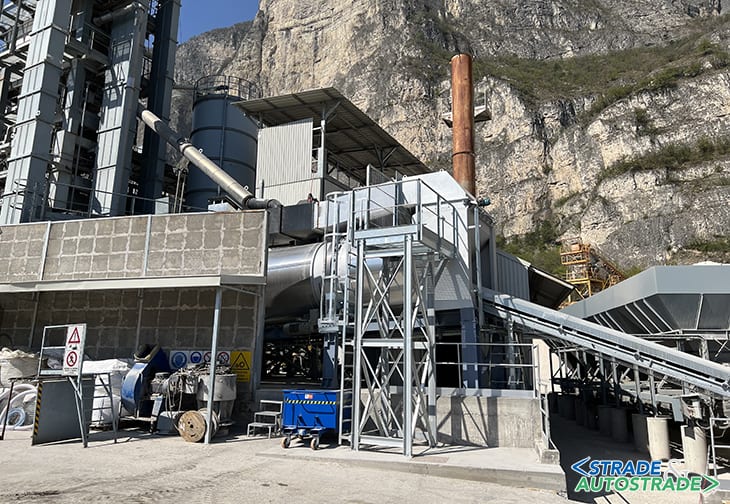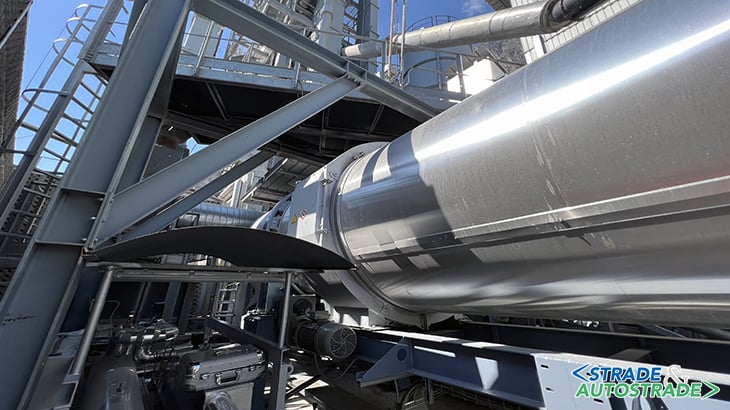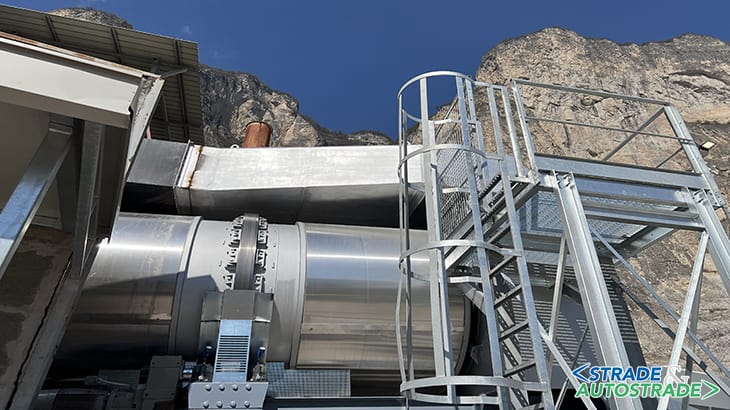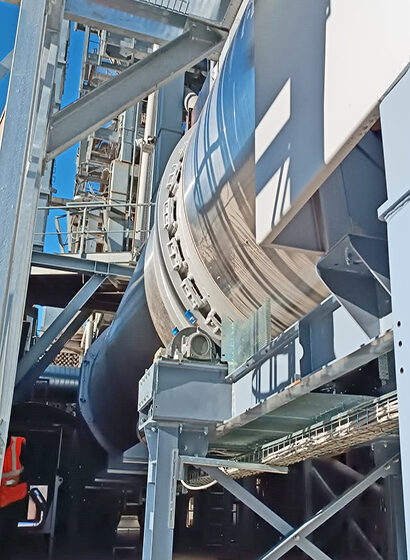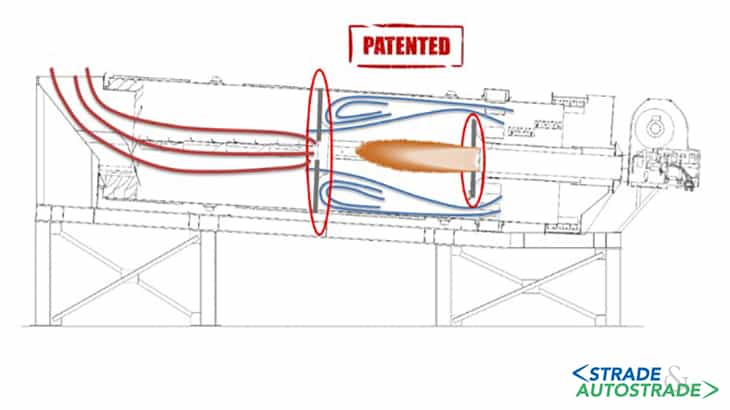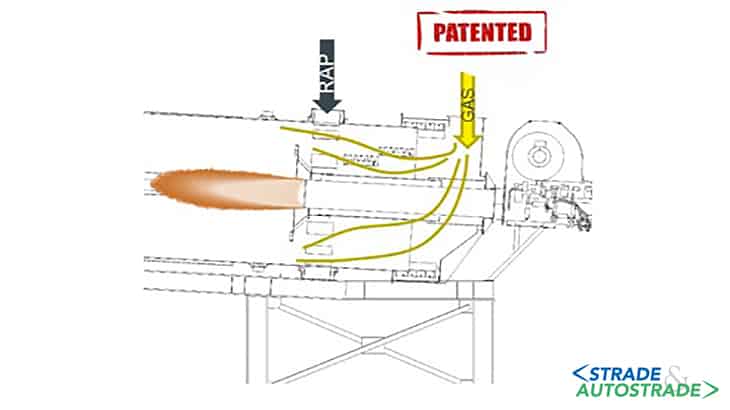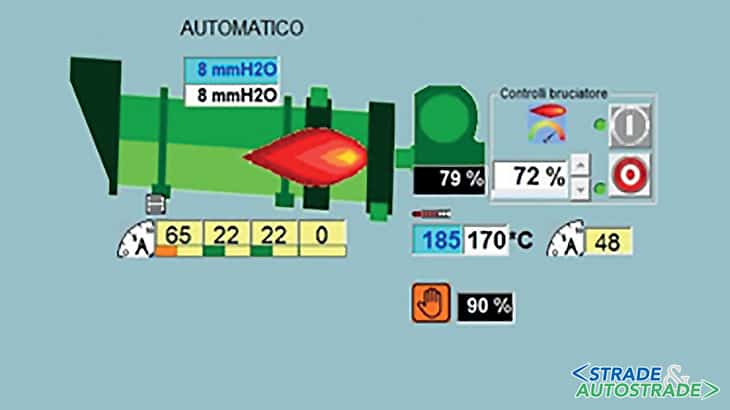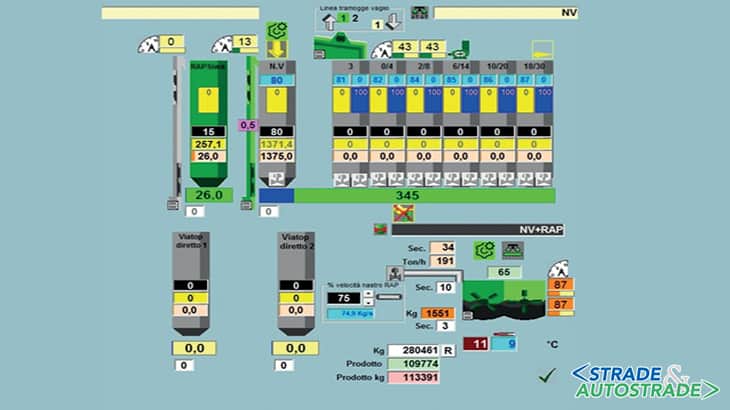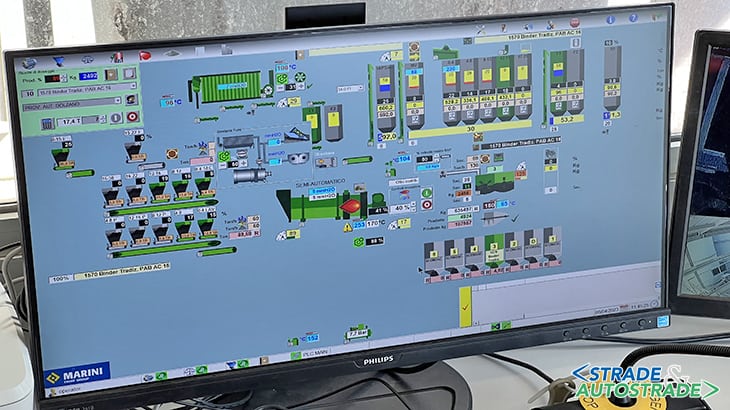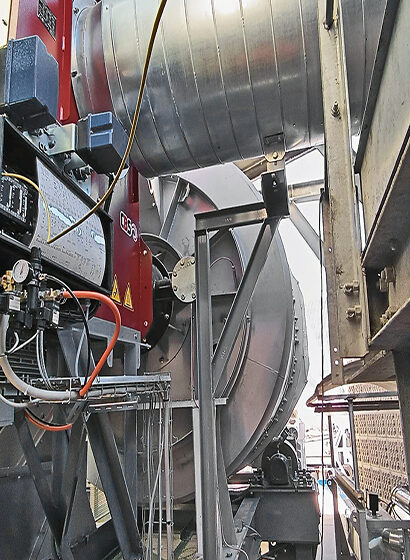![]() Per la versione in Italiano: https://www.stradeeautostrade.it/asfalti-e-bitumi/un-tocco-evo-allimpianto-marini/
Per la versione in Italiano: https://www.stradeeautostrade.it/asfalti-e-bitumi/un-tocco-evo-allimpianto-marini/
The results obtained by Marini with the UltiMAP2700 implants were achieved thanks to constantly modernising Marini’s plants with state-of-the-art technologies.
The increasingly stringent local restrictions aimed at reducing environmental impact and Stradasfalti’s need for innovative solutions to preserve natural resources by increasing RAP percentages in the recipe and reducing odour and polluting emissions, has led to the installation of a new, state-of-the-art dryer, i.e. the EvoDRYER.
Thanks to the new dryer, the plant can now recycle up to 40% of RAP through the dryer’s ring or even 60% if both the dryer and the mixer lines are used simultaneously.
Initially designed to be installed on Marini’s Top Tower range, the new EvoDRYER can be easily coupled with existing plants thanks to Marini’s latest configurations (https://marini.fayat.com/en/service/retrofitting-upgrading).
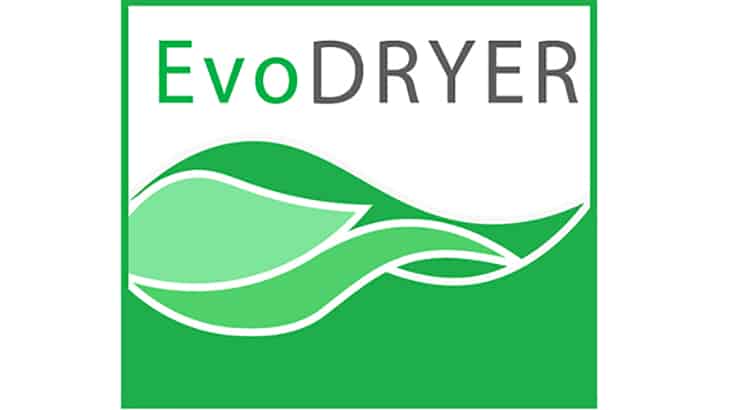
Compared to the previous generation of dryers, the new EvoDRYER meets Stradasfalti’s requirements as it stands out for the following features:
- possibility to recycle up to 40% of RAP selected at the ring against 25-30% of RAP recycled by obsolete solutions;
- new position of the recycling ring and extension of the dryer by 2.5 m:
- the ring’s new position is now out of the burner’s flame area, eliminating any risk of damage to the binder contained in the RAP. The bitumen in the RAP is heated homogeneously without temperature peaks through contact with aggregates. In this way, the bitumen can keep and reactivate its binding properties and obtain a top-quality finished product in terms of rigidity and indirect traction;
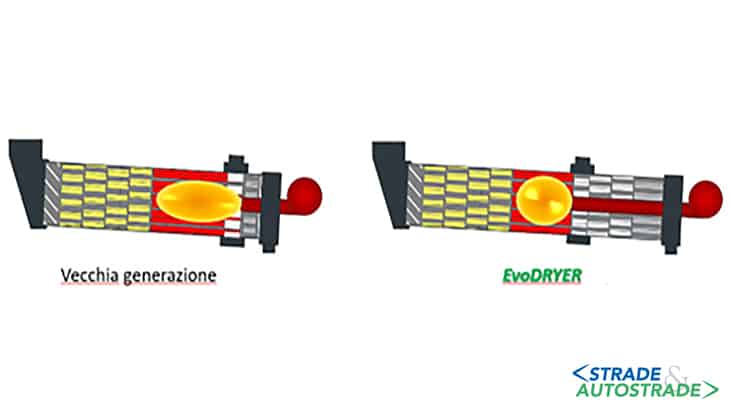
- reduced cleaning and maintenance of the dryer’s RAP-passing section thanks to the new comb-shaped flights in the aggregates and RAP mixing area (space between the dryer’s recycling ring and discharge chute);
- drastic reduction of odour and polluting emissions. Thanks to the thermal treatment of the pollutants resulting from the heated RAP inside the dryer and the gases drawn from inside the mixing tower modules, VOC emissions to the bag filter chimney are always lower than 50 mg/Nm3 (in case RAP is inserted in the dryer’s ring). Moreover, odour emissions are significantly reduced.
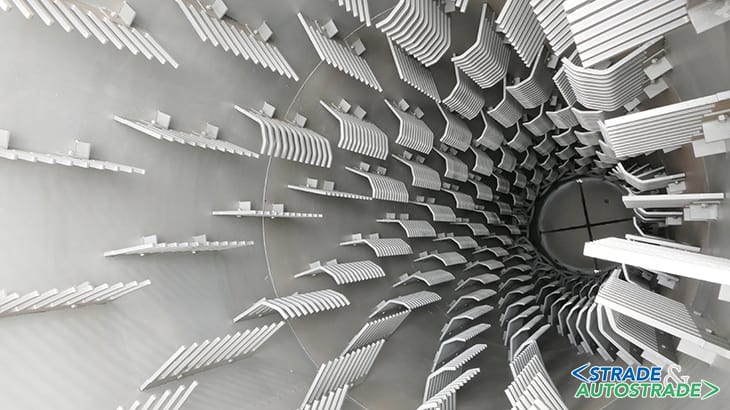
This is possible due to the ring’s position and the pollutant gas recirculation on the flame inside the dryer, as shown on Figures 5 and 6.
Another improvement to Stradasfalti’s plant was obtained by improving the existing control system with Marini’s new Cybertronic 500 software (9.9 version), which can implement new Marini software packages and ensure the following:
1. essential requirements for applying Industry 4.0. The Office – Industry 4.0 software allows the plant to meet the Industry 4.0 decree. In particular, this software automatically generates a periodic file (e.g., every time the plant is switched on and/or at the end of every batch production) where daily production data is recorded, and production orders are sent from the offices to the plant;
2. optimized production process, in particular in terms of thermal and electrical consumption and use of RAP:
- thanks to the “Drying Process Control” application, we have implemented an automatic control of the material outlet temperature (even in the presence of hot/cold RAP) and a self-commissioning process for the continuous learning of control parameters, which depend on the drum/filter system structure and the calculation of the hot air/material thermal exchange coefficient. In particular, by continuously adjusting the burner’s power and the drum’s rotation speed based on the flow rate and humidity of the materials to be dried, we could stabilise the outlet temperature of the material leaving the dryer and the inlet temperature of the fumes in the filter.
This control simplifies the use of the plant through three operating modes:
-
- “Manual”: the operator manually controls the drum’s negative pressure and the burner’s power;
- “Semi automatic”: only the burner’s negative pressure is controlled automatically
- “Automatic”: both the burner’s negative pressure and the material temperature are adjusted and managed automatically. In this way, the dryer drum adapts to any operating mode and environmental condition, optimising the thermal exchange and reducing the fuel consumption.
- the last installed application is related to “Dynamic RAP Management”, which automatically and dynamically manages the change of the RAP percentage that can be used based on the various operating situations, thus maintaining the required recipe and the finished product performance characteristics. In this case, we maximise RAP percentages to reduce production costs and, in particular, the plant’s environmental impact.
![]() Per la versione in Italiano: https://www.stradeeautostrade.it/asfalti-e-bitumi/un-tocco-evo-allimpianto-marini/
Per la versione in Italiano: https://www.stradeeautostrade.it/asfalti-e-bitumi/un-tocco-evo-allimpianto-marini/

